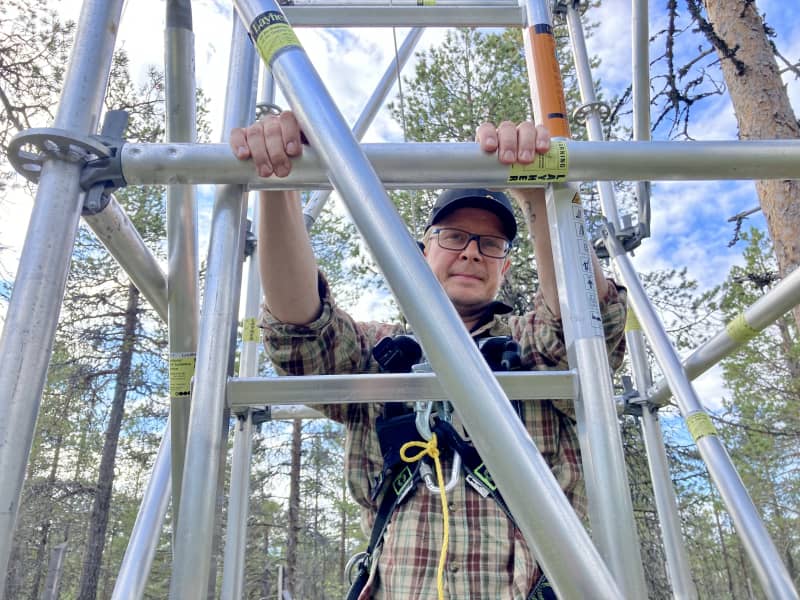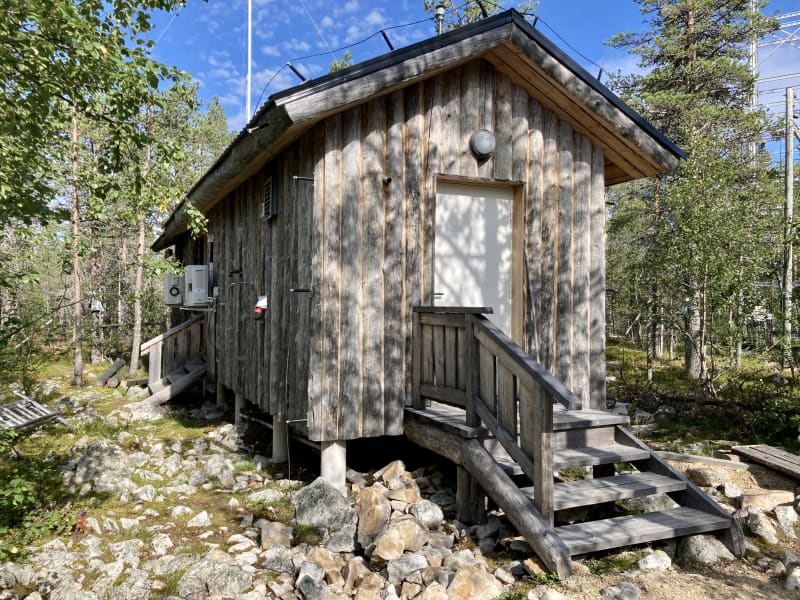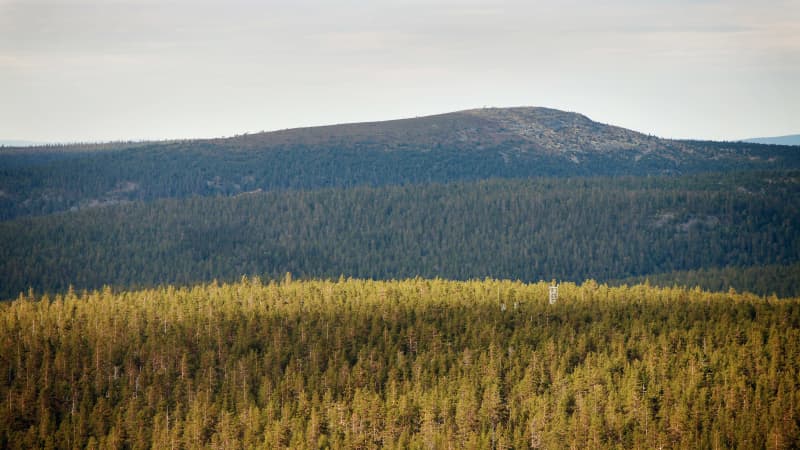The Värriö research station clearly shows signs of northern climate change. The climate at the research station in Salla is similar today to what it was 300 kilometres to the south just over 40 years ago.
Signs of climate change are most evident in the Arctic and the northern coniferous forest belt.
– The pace of change is so rapid here and there is no end in sight at the moment, so there is nothing to do but worry, says Mikko Sipilä at Värriö research station.
The atmospheric scientist bases his concerns on international studies and observations made at Värriö research station over the past 50 years, among other things.
– The temperature has risen here in December by four degrees in about 50 years, and the tree line has been getting higher and higher. The snow-covered period has shortened by three weeks in the last 40 years, Sipilä lists the changes in the climate of the Värriö area.
Finland’s expertise in atmospheric research is of an internationally high standard and has received worldwide recognition. At the Center for Atmospheric Science, very sensitive measuring devices have been developed, and researchers’ research articles have been published in a large number of prestigious scientific journals in the field.
The main task of the Värriö research station is atmospheric research
Mikko Sipilä presents the Värriö research station located in the old forests of Lapland, the place is impressive. An old-growth forest grows around the yard, but higher up in Kotavaara, the trees are getting younger. There has been a large forest fire in the area in the past, and younger trees are now growing in place of the old forest.
Below the residential and office building, in the gorge between the dangers, a small lake glistens.
Movement in the nature park is subject to a permit, the silence is only broken by birdsong and the hum of the wind.
– Yes, there are predators here. The wolf and the wolverine are by no means strange guests in these regions, they sometimes stray into these countries from the Russian side, says Sipilä and points his hand in the direction of the east.
The Värriö research station was founded in 1967 by professor Erkki Pulliainen, and the first years the station focused mainly on predatory animal research. Currently, the main task of the station is atmospheric research, which is part of the Center for Atmospheric Sciences of the University of Helsinki.
Around the main building, there are various measuring devices on the ground, some of which are technology owned by the Finnish Meteorological Institute, the Radiation Protection Agency, the Seismological Institute and the Finnish Environment Institute. All devices produce different information.
Up in Kotavaara, there is a SMEAR station consisting of state-of-the-art equipment. Measuring devices can detect very small components that are in the air’s small particles.
– We have two main research branches here. The second is related to the carbon cycle, i.e. we study how forests bind carbon. The main branch of the second study is small particles in the atmosphere, explains Mikko Sipilä.

Massive temperature rise in the Arctic
During the presentation round, Sipilä highlights a new study by the Finnish Meteorological Institute, according to which the climate in the Arctic region is warming at four times the rate compared to the global average.
– Yes, the warming we measured here is completely in line with the new studies of the Finnish Meteorological Institute, confirms Sipilä.
On average, according to studies, the global climate has warmed 1.1 degrees from the level of 1850. Warming intensifies as you go north, and in Finland the estimate is 2–2.5 degrees. According to Sipilä, the Värriö area now has the same climate as in the 1970s and 80s in Suomussalmi, 300 kilometers further south.
At the current rate, the temperature will rise by 0.6 degrees in a decade, and by 2050 it is estimated that the temperature will have already risen by four degrees.
– Regarding the winter months, we are talking about 6–7 degrees in the near future. It is indeed difficult for nature, fauna and vegetation to adapt to such a rapid change, says atmospheric scientist Mikko Sipilä.

From Värri to top researcher to the world and back
The Värriö research station has been a place for several students and young researchers to get familiar with field research. Mikko Sipilä first came into contact with Värriö as a student in the early 2000s, and the place stuck in his mind so well that he is now its manager.
After his studies, the curious scientist’s path led him to field research around the world for long periods of time, often to Antarctica and Mt. One trip in particular has stuck in Sipilä’s mind, when a blizzard surprised the pilots and passengers of an Argentine Defense Forces plane on their way to Antarctica.
– The captain had to make several pull-ups and on the third time something banged and the engine failed. Then we quickly turned back and luckily survived. After weeks of repair, they tried again, Mikko Sipilä recalls one of his memorable trips to the South Pole, but quickly got serious.
According to him, greenhouse gases are causing such rapid global warming at this rate that nothing similar has been observed before in the history of the world.
– The exception is asteroid collisions with the Earth, but they have not been human-caused disasters that led to climate change, Sipilä thinks.
Did the story spark any thoughts you want to share? You can participate in the discussion with Yle Tunnus on 13.9. until 11 p.m.

